To:
Kel Glover, Project Manager, Projects, ANU; Aidan Bower, Project
Manager, Construction Control
From:
GML Heritage
Date:
6 October 2023
Our Ref: 23-0355
Subject: Remediation Heritage Advice for ANU Childcare Centres
Background
GML Heritage (GML) has been engaged by Construction Control, on behalf of the
Australian National University (ANU), to provide heritage advice on the remediation work
of four childcare centres, located in seven historic buildings at the ANU Acton Campus.
The four childcare centres are:
• Heritage Childcare Centre at 15 Lennox Crossing (Building 75G (Blocks D,G,H))
• University Preschool Childcare Centre (UPCC) at Lennox Crossing (Building 75E&F)
• Cubby House on Campus (Building 67), 16 Balmain Lane (Building 67)
• Acton Early Childhood Centre (AECC) at 22 Balmain Crescent (Building 72)
The childcare centres are located within historic cottages and former accommodation
buildings, referred to as the Acton Cottages and Lennox House Complex. They were
constructed between 1911 and 1946 and are significant in the history of the
establishment of Canberra. All buildings are intact with a high degree of integrity.
Refer to Figures 1.1 – 1.3 for their location, and their heritage status in the section
below.
All four childcare centres were damaged by hail in the 2020 Canberra hailstorm. In the
process of investigations for hail remediation, extensive hazardous material has been
identified, including asbestos sheeting and lead paint. To bring the childcare centres up
to contemporary standards, for accessibility, health and safety, extensive remediation
and reconstruction works would be needed in all buildings.
This heritage advice memo is to explain the implications of the proposed remediation
approach by AMC Architecture (documented in childcare refurbishment drawings for all
building, dated 31 August 2023).
1
GML template 101121
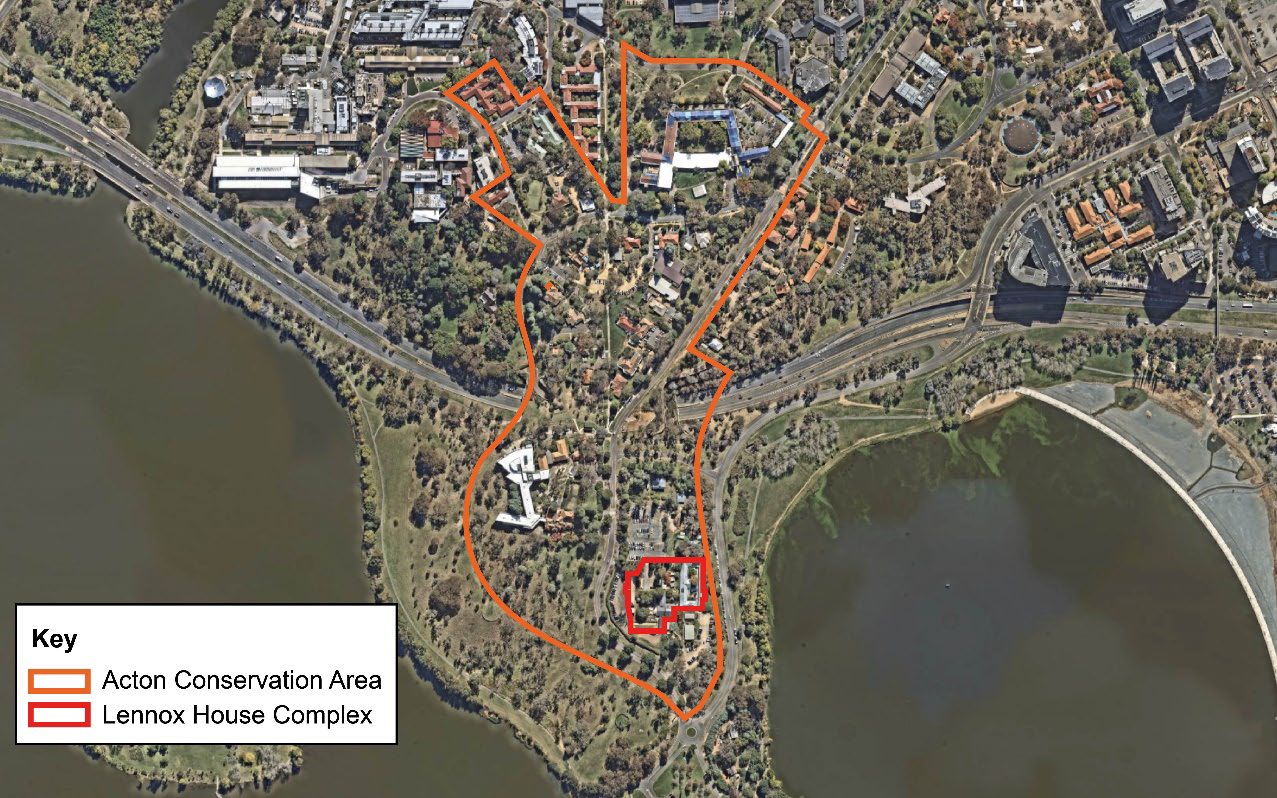
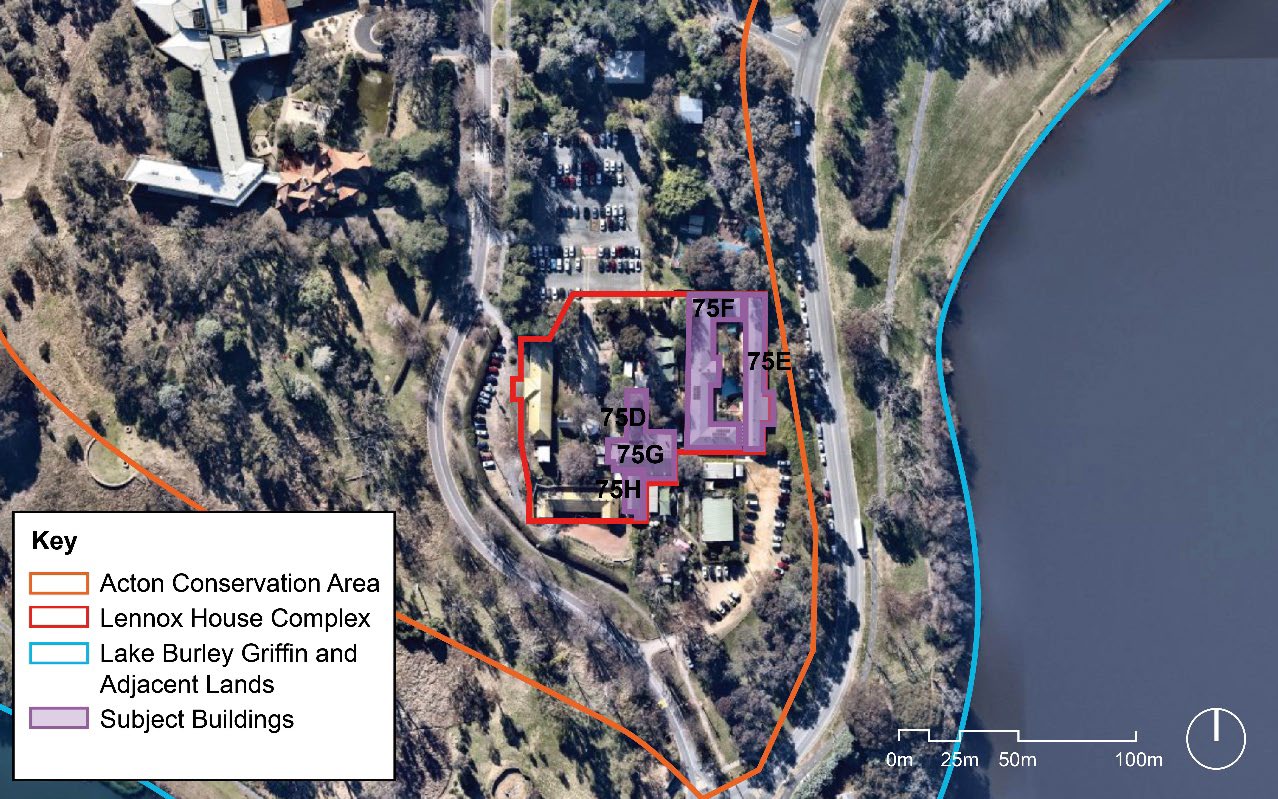
Figure 1.1 Acton Conservation Area and Lennox House Complex Commonwealth Heritage places.
Figure 1.2 Boundaries of Commonwealth Heritage Listings relevant to Lennox House Complex and
buildings where works are proposed.
2
GML template 101121
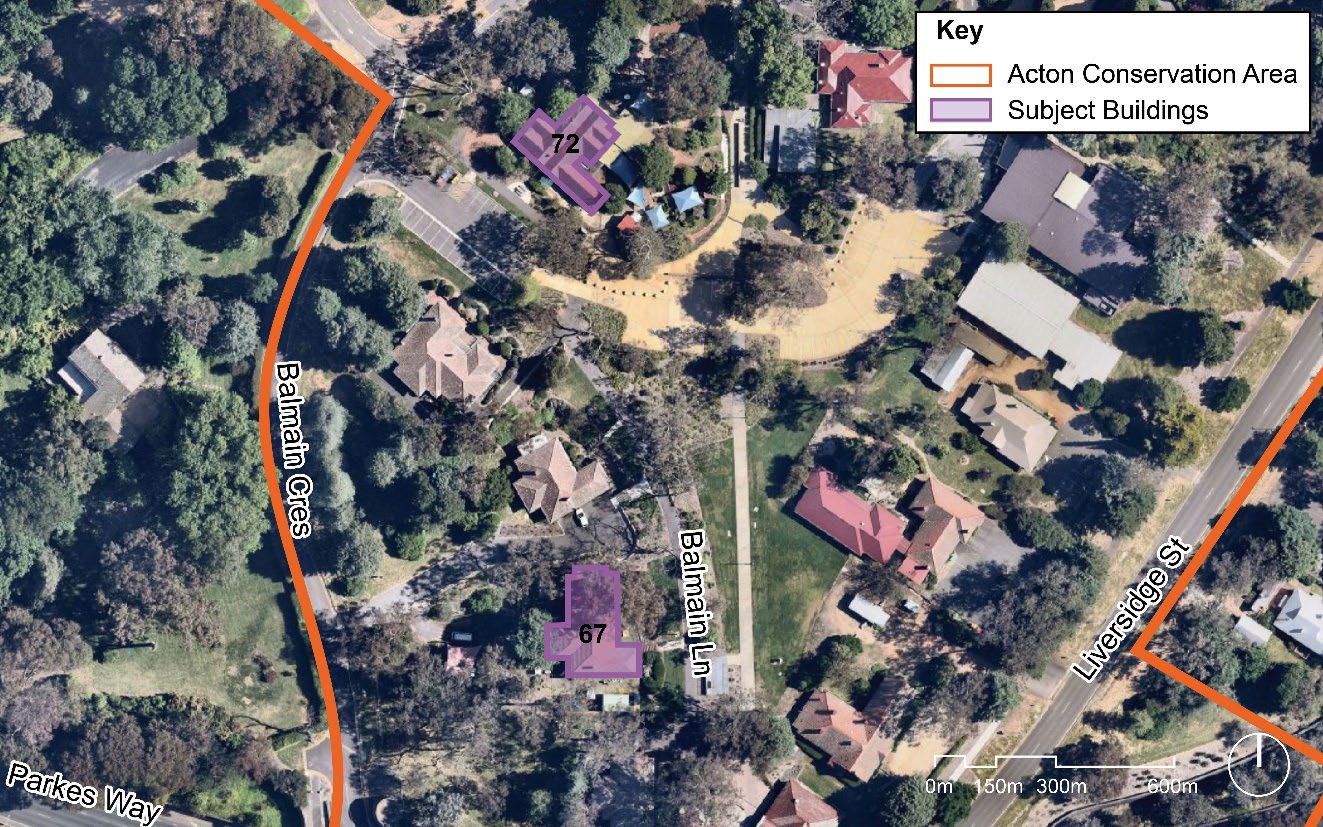
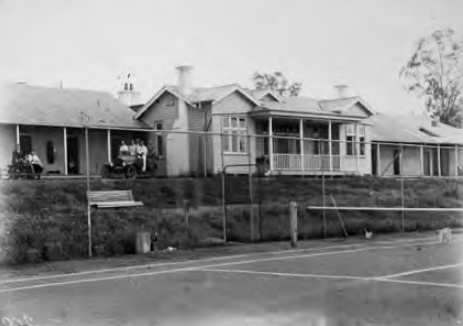
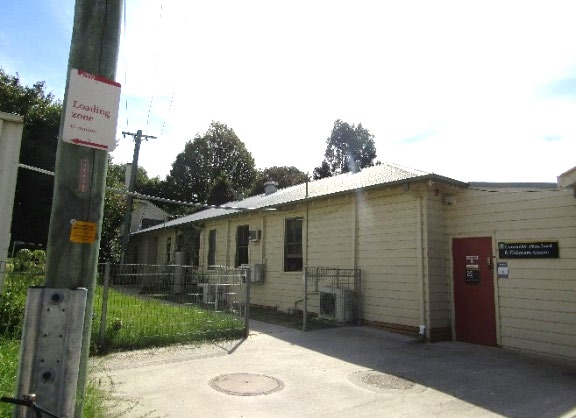
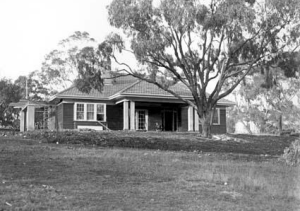
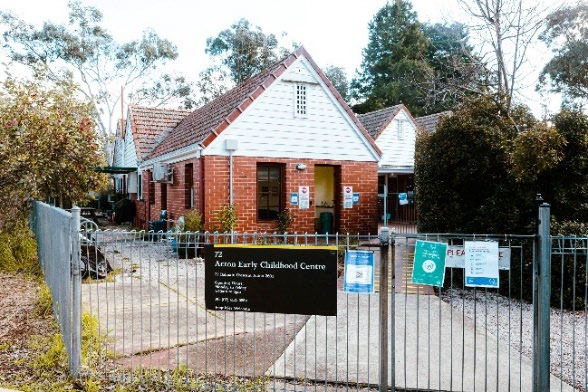
Figure 1.3 Boundary of Acton Conservation Area and the Acton Cottages where works are
proposed.
Heritage Childcare Centre at 15 Lennox
UPCC (Building 75E&F)
Crossing (Building 75G)
Cubby House on Campus (Building 67)
Acton Early Childhood Centre (Building 72)
3
GML template 101121
Heritage Context
The seven historic buildings have Commonwealth Heritage status, as they are located
within two Commonwealth Heritage-listed conservation areas: Lennox House Complex
(CHL 105307), and the Acton Conservation Area (CHL 105340).
Acton Early Childhood Centre (Building 72) and Cubby House (Building 67) are in the
Acton Conservation Area, part of the group of cottages within this conservation area
known as the Acton Cottages.
The Heritage Childcare Centre (Building 75G (Blocks D, G, H)) and University Preschool
Childcare Centre (Building 75E&F) are part of the Lennox House Complex as well as the
Acton Conservation Area.
The heritage values for the two conservation areas and the individual buildings have
been summarised from the CHL citations in the following table.
CH Place
Relevant Commonwealth Heritage Values
Acton
Acton Conservation Area is significant:
Conservation
• For the role it played as the administrative, residential and social centre of
Area
Canberra from 1911 to the 1920s.
• The remaining buildings, fabric and landscape from the Acton Village
(including the Acton Cottages) are the most extensive surviving cultural
landscape from this era.
• The Conservation Area demonstrates the provision of accommodation
according to socio-economic status via the existing of Canberra House and
the Acton Cottages for high-status public servants and Lennox House and
Acton Workers Camp, which were used for lower ranking public servants.
• The Lennox House complex is the first hostel in Canberra and the only
surviving hostel from this earliest period of development in Canberra.
• The Balmain Lane Acton Cottages are the second oldest surviving 1920s
subdivision in Canberra after Braddon, which was developed in 1921.
• The area is associated with Canberra’s early architects and designers, who
designed many of the buildings.
Lennox House Lennox House Complex is significant:
Complex
• For its role as residential and administrative centre for the new city of
Canberra. Lennox House is associated with the earliest development of the
Federal Capital and with the successive development of Canberra and the
Australian National University.
• As an uncommon example of early hostel accommodation in the Australian
Capital Territory.
• Architecturally, the complex displays a uniformity of scale, form and
materials and represents one of the few surviving examples in Canberra of
pre-Federal Capital architectural design. Individually, the buildings are
significant for their retention of original features.
4
GML template 101121
CH Place
Relevant Commonwealth Heritage Values
• Block G is significant as the only remaining example of a mess building
associated with the early work camps. It is possible the second oldest
surviving building erected in Canberra for the Federal Capital, and shows
the carpentry and joinery skills of the period.
• Block F, constructed in 1911-13, is designed in elements of the Federation
Arts and Crafts style and displays typical characteristics such as the strong
roof pitch, gables and expressed rafters.
What Commonwealth Heritage status means
Under the
Environment Protection and Biodiversity Conservation Act 1999 (Cth) (EPBC
Act), the ANU, as a Commonwealth agency, must protect, conserve and transmit the
heritage values of places it owns and manages.
The ANU must not take an action which is likely to have an adverse impact on the
Commonwealth Heritage values of Lennox House Complex or the Acton Conservation
Area unless there is no feasible and prudent alternative to taking the action, and all
measures that can reasonably be taken to mitigate the impact of the action can be
taken. Consequently, any remediation works to the buildings need to be designed to
avoid heritage impacts.
In addition, the ANU cannot take any action that has, will have, or is likely to have a
significant (ie: higher than adverse) impact upon the Commonwealth Heritage values of
Lennox House or the Acton Conservation Area without approval from the Minister for the
Environment and Water.
The requirement for extensive remediation of the historic cottages will likely result in an
adverse heritage impact. The best approach for mitigating potential significant impacts is
through a conservation-focused restoration approach.
Proposed Works
Construction Control has engaged AMC Architecture to identify the scope of works that
would be necessary to safely remediate the historic buildings for use as childcare
facilities, to ensure they are code compliant (eg: disability and childcare service codes).
In accordance with Australian building codes, the scale of hazmat remediation would
trigger a consequent need to comply with building codes for accessibility and childcare
services. As such, the scope of works would need address remediation, reconstruction
following best heritage practice, accessibility and specialist childcare requirements.
5
GML template 101121
The approach proposed by AMC Architecture for remediation and reconstruction, to
comply with these requirements for childcare usage, is summarised below for each
building.
Due to the standards required to ensure the buildings are safe for childcare use, and the
flow-on requirements to comply with Australian building codes that are not currently
applicable to the historic buildings, extensive demolition would be needed for
remediation. As well as removing hazmat, walls will need to be demolished to widen
corridors, and windows removed and reinstated at different heights. Of the seven
buildings making up the four childcares, only Building 72 (22 Balmain Lane) will retain a
noticeable amount of building fabric, retaining some internal and external walls.
The removal and demolition of original, historic fabric will leave little heritage integrity.
Demolition of historic fabric would have an adverse, significant impact to heritage values
because it is an irreversible action. Refer to the discussion in the next section.
B67 – Cubby House on Campus, 16 Balmain Lane
• Demolish all exterior cladding and features except for chimneys and front entry
columns.
• Remove and replace all lead painted external weatherboard to match existing.
• Remove almost all internal wall lining to the requirements of hazmat report,
leaving studs/timber framework in some places and removing entire wall in
others. Replace with painted plasterboard.
• Remove all lead painted window frames and replace with similar
• Remove all lead painted architraves, skirtings, and moldings as per hazmat report
and replace with similar.
• Remove all existing doors with new doors to be AS1428 compliant, architrave,
door and glazing details to match heritage advice.
B72 – Acton Early Childhood Centre, 22 Balmain Lane
• Partial demolition of some external and internal walls and removal of internal wall
lining, leaving studs/timber framework in some places, and removing entire wall
in others. Removal of all windows and roof.
• Remove all lead painted external weatherboard and replace with profile to match
existing.
• Remove all lead painted window frames and replace to Match existing.
• Replace all existing doors with new doors to be as1428 Compliant. Architrave,
door and glazing details to match existing.
• Remove all asbestos wall linings to the requirements of Hazmat report. Replace
with painted plasterboard.
6
GML template 101121
• Remove all lead painted architraves, skirtings and moldings from walls & ceilings
as per hazmat report, and replace to match existing.
B75 E & F – University Preschool Childcare Centre (UPCC) – Lennox Crossing
• Remove all external and internal wall lining, leaving studs/timber framework in
some places and removing entire wall in others.
• Remove all lead painted external weatherboard and internal cladding, and replace
with profile to match existing.
• Remove all lead painted window frames and replace to match existing.
• Replace all existing doors with new doors to be as1428 compliant. Architrave,
door and glazing details to match existing.
• Remove all asbestos wall linings to the requirements of hazmat report. Replace
with painted plasterboard.
• Remove all lead painted architraves, skirtings and moldings from walls & ceilings
as per hazmat report and replace to match existing.
B75 DGH – Heritage Childcare Centre, 15 Lennox Crossing
• Remove all external and internal wall lining, leaving studs/timber framework in
some places and removing entire wall in others.
• Remove all lead painted external weatherboard and replace with profile to match
existing.
• Remove all lead painted window frames and replace to match existing to heritage
architects advice.
• Replace all existing doors with new doors to be as1428 compliant. Architrave,
door and glazing details to match existing.
• Remove all asbestos wall linings to the requirements of Hazmat report. Replace
with painted plasterboard.
• Remove all lead painted architraves, skirtings and moldings from walls & ceilings
as per hazmat report and replace to match existing.
Heritage Advice
Key Points
The scope of proposed works to for the Acton Cottages and Lennox House Complex
buildings—noted above—would involve hazardous material remediation and the removal
of the majority of historic fabric, effectively causing complete demolition of at least six of
the seven buildings (Buildings 76, 75G (Blocks D, G, H) and 75E&F) and major, partial
demolition of Building 72.
7
GML template 101121
The currently scoped works therefore would have an unacceptable, severe heritage
impact on the heritage values protected under the EPBC Act and would be unlikely to
obtain approval as proposed.
The proposed ongoing use of the historic buildings for childcare facilities (that must be
code-compliant) leads to adverse significant impacts on the Commonwealth Heritage
values of the historic buildings and the two conservation areas. A different use for the
historic buildings that does not require the high level of intervention for hazardous
material remediation would be a better solution.
Discussion and preliminary heritage impact assessment
The Acton Cottages and the Lennox House Complex are significant historical buildings
associated with the early settlement and establishment of Canberra, the new national
capital. As some of the oldest Federal Capital buildings in Canberra the group of
buildings, their form, fabric and position within the landscape setting of the conservation
areas must be conserved.
Changes which impact the physical fabric of the buildings (ie: removal and demolition),
and a project that does not result in conservation of fabric, will therefore impact the
Commonwealth Heritage values.
The proposed action would have a significant, adverse impact on the heritage values,
meaning that under the EPBC Act the ANU must not undertake these works unless there
are no other alternatives and all approvals have been obtained. Alternatives to this
proposed action have not been explored or presented.
• The works would be permanent, high intensity, and involve irreversible large-scale
demolition.
• The impacts of the proposed approach cannot be mitigated, because of their
severity.
- In some cases, minor individual pieces of heritage fabric could remain (eg:
timber building frames), but the extent of removal is so extensive as to be
considered a complete demolition in the case of every building except Building
72, which would have a major, partial demolition.
- In addition, fabric that ANU would try to retain would probably be damaged or
contaminated during the remediation process and be unable to be reused.
• The proposed works include the replacement of removed fabric. However, due to
the scale of demolition associated with each building, replacement like-for-like
would in effect be a reconstruction of the buildings, rather than repair. To meet
8
GML template 101121
codes the reconstructions could not be accurate recreations—for example
corridors would need to be wider and windows lower.
- Reconstruction of demolished heritage buildings is only appropriate in rare
circumstances. Avoiding demolition should be the first priority.
- The
Burra Charter states that reconstruction is appropriate ‘only where a
place is incomplete through damage or alteration, and only where there is
sufficient evidence to reproduce and earlier state of the fabric’ (article 18).
The buildings would not be incomplete but demolished, and any
reconstruction would not help to reveal the heritage significance of the
buildings, as their significance is associated with their original, remaining,
historic fabric and design that would be lost.
- Instead, any new structures within the Acton Conservation Area should be
identifiable as new buildings while being sensitively designed to be
sympathetic to the village-like character of the landscape.
Heritage Approvals and Regulations
Under the EPBC Act, any action which is likely to have a significant impact on heritage
values must be referred to the Minister for the Environment and Water for approval.
Actions which are likely to have a significant impact include those which will:
• permanently destroy, remove or substantially alter the fabric (physical material
including structural elements and other components, fixtures, contents, and
objects) of a heritage place;
• involve extension, renovation, or substantial alteration of a heritage place in a
manner which is inconsistent with the heritage values of the place.
Due to the severe impacts associated with the proposed works, it is unlikely they would
receive approval from the Minister. An extensive approvals process would need to be
followed under the EPBC Act to seek any approvals with no guarantee of success,
creating an operational risk to the ANU from the uncertainty of this process.
The ANU must consider cumulative impacts when assessing impacts—individual actions
may accumulate to create an unacceptable level of impact. Therefore, a proposal to
undertake works to each building individually or as a total package for all seven
buildings, would still have significant impacts. Together, the scale of demolition across
the Acton Conservation Area and Lennox House Complex means the cumulative impacts
of the works are high. Under the EPBC Act, the Minister may also refuse a referral for
approval if they believe the works are actually part of a larger action.
Additionally, the ANU would need to obtain works approval from the National Capital
Authority for the proposed works. To receive works approval the proposal must generally
9
GML template 101121
be consistent with the National Capital Plan, which has the objective for the ANU to
conserve, enhance and interpret the heritage values of the campus in the context of a
modern, dynamic research and teaching campus. The ANU Precinct Code states that
architectural imitation should be avoided.
For projects which would require approval under the EPBC Act, the NCA will generally not
proceed with a works approval until an EPBC Act decision has been made.
Demolition of the buildings is also inconsistent with the Acton Conservation Area Heritage
Management Plan 2011 (policy 1.11), Lennox House Complex Heritage Management Plan
(2009) (policy 16) and the ANU Acton Campus Heritage Framework 2019 (p 42).
Heritage Recommendations
• ANU and Construction Control should seek alternative options to address
remediation needs that have less heritage impact than the currently proposed
approach. The ANU is required to seek alternatives and mitigate impacts under
the EPBC Act. Options for remediation should be chosen that require less/no
removal of original fabric of the buildings.
• A change in use of the buildings, (eg: away from childcares to buildings used by
adults), would be a non-interventionist alternative solution to reduce the impacts
of remediation.
- The level of remediation required for the buildings is due to their current use
as childcare facilities. Due to the risks associated with children, safety
measures which have less heritage impact such as partial remediation,
encapsulation of hazardous materials or warnings are not suitable.
• While remediation of the buildings would probably still be required, if the buildings
were repurposed and adapted for a different function (for example to offices)
methods which have less impact could be used and more heritage fabric could be
retained.
• This approach would make the works more likely to receive approval from the
Minister for Environment and Water and the NCA.
- Changes to new, compatible uses are also considered an acceptable activity
under the heritage management plans for the building.
Next Steps
• ANU should not proceed with the currently proposed approach to remediate the
childcares, and consider alternative uses or functions that are suitable for the
historic buildings, and the Commonwealth Heritage values.
10
GML template 101121
- For example, suitable functions for the buildings would involve uses that have
fewer building alteration requirements, which in turn would have lower
heritage impact and remediation requirements.
• If the ANU decide to continue with the remediation and restoration of the historic
buildings for childcare centres, they should meet with the Department of Climate
Change, Energy, the Environment and Water (DCCEEW) to discuss and inform
them of the chosen revised remediation approach and seek advice on the EPBC
Act referral process.
• When the preferred approach for works to the buildings has been determined, the
ANU should engage a qualified heritage consultant to prepare a detailed heritage
impact assessment, which will give a comprehensive analysis of the impacts of
the proposed works on protected heritage values.
11
GML template 101121
Document Outline






